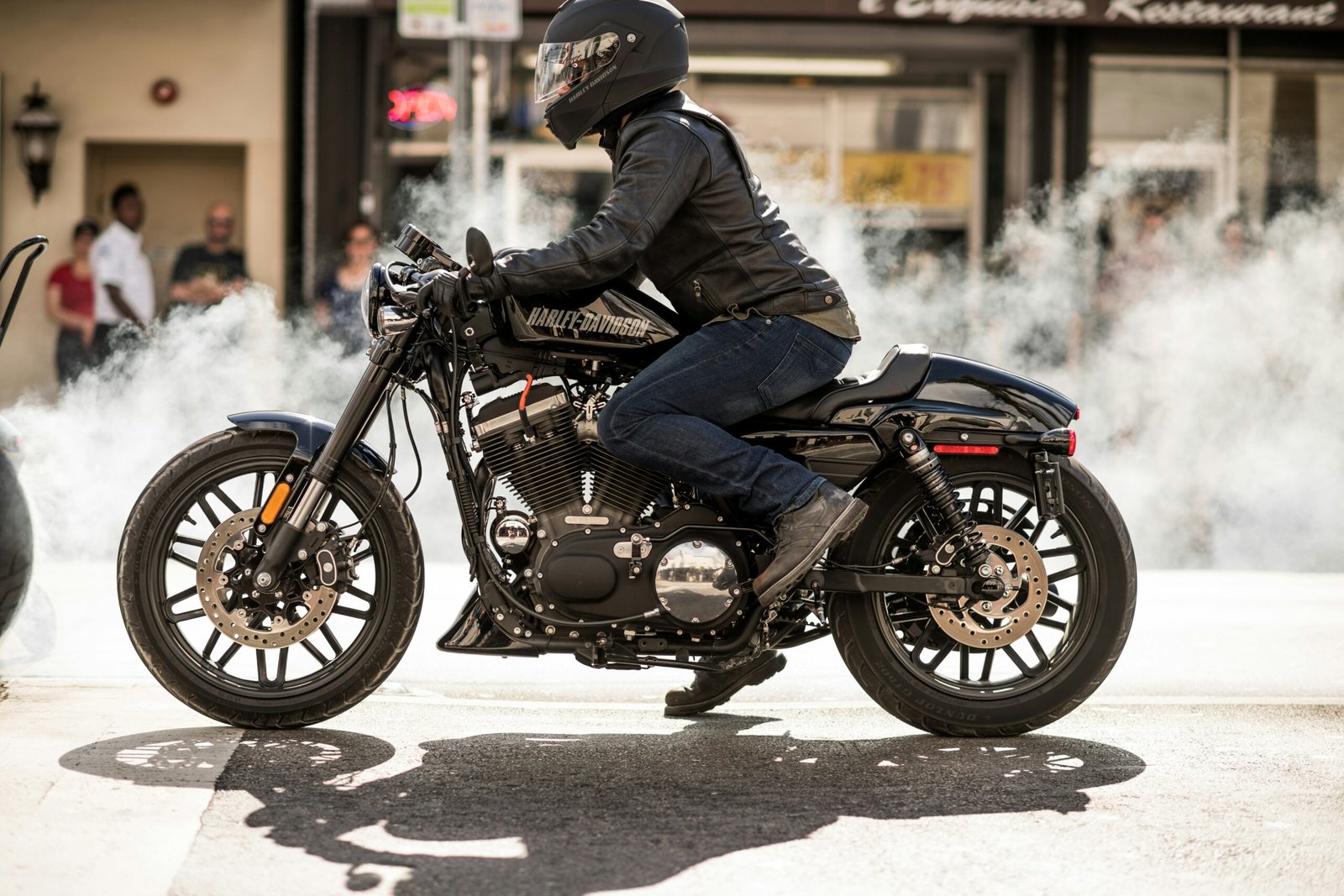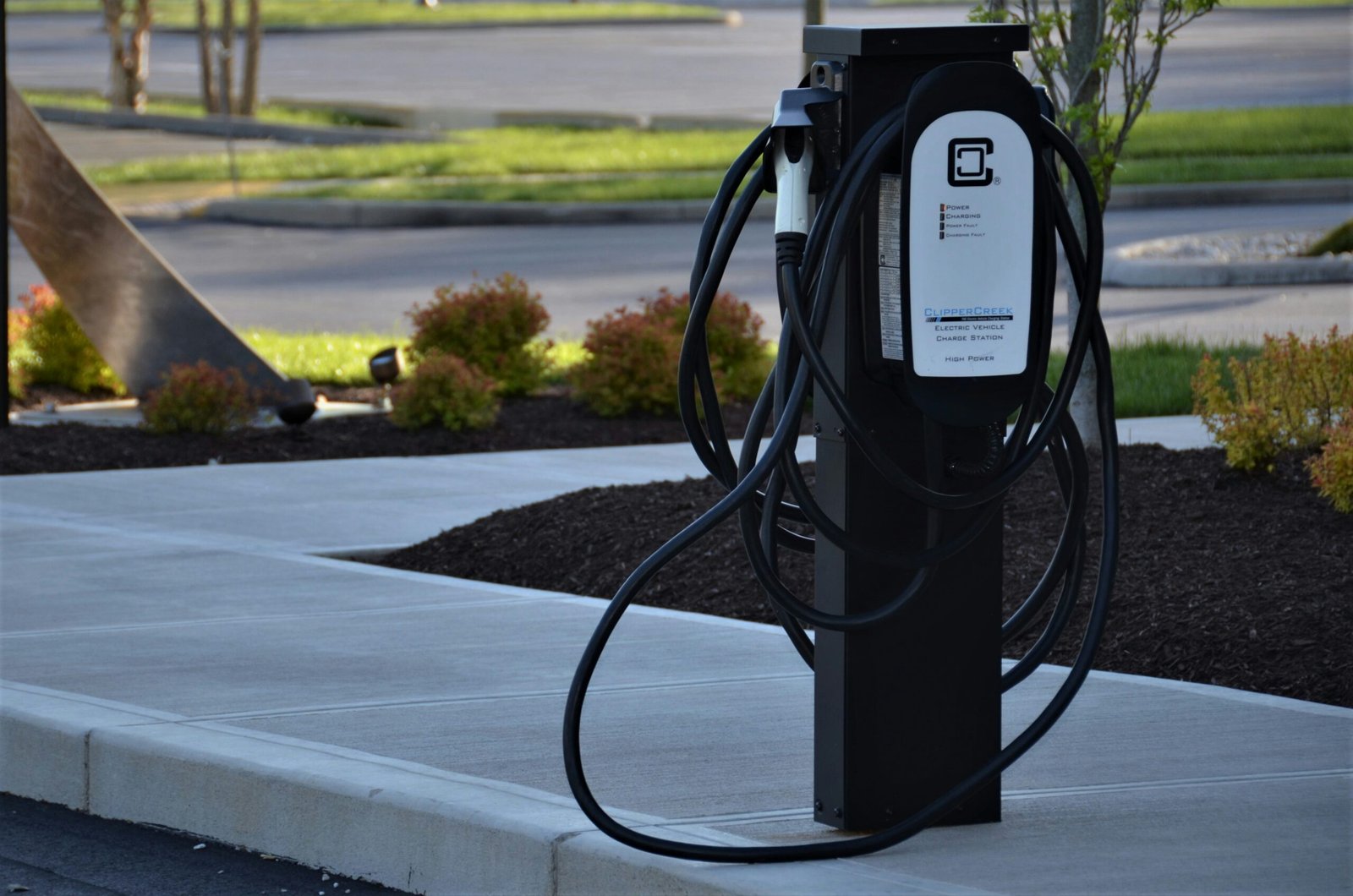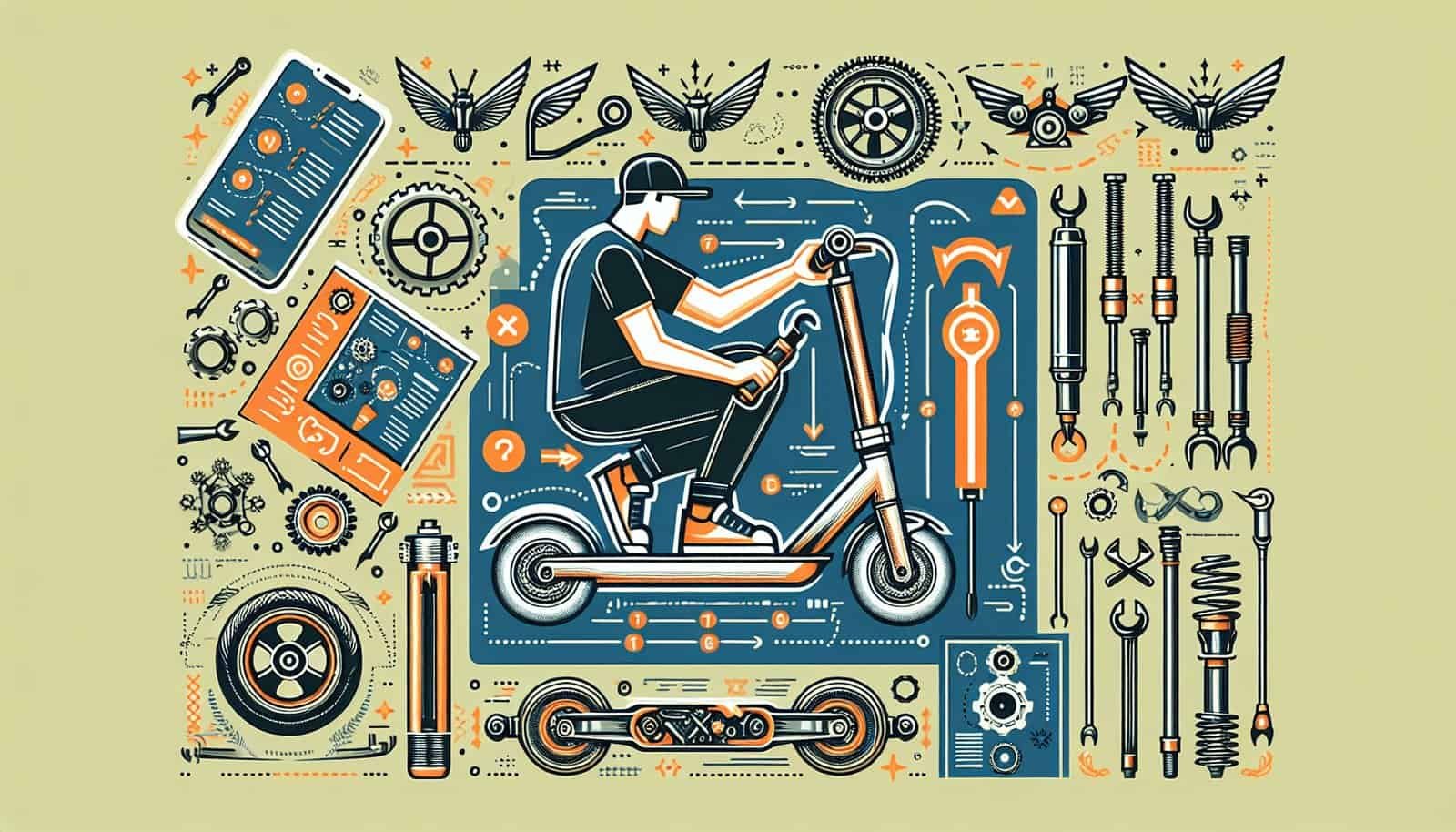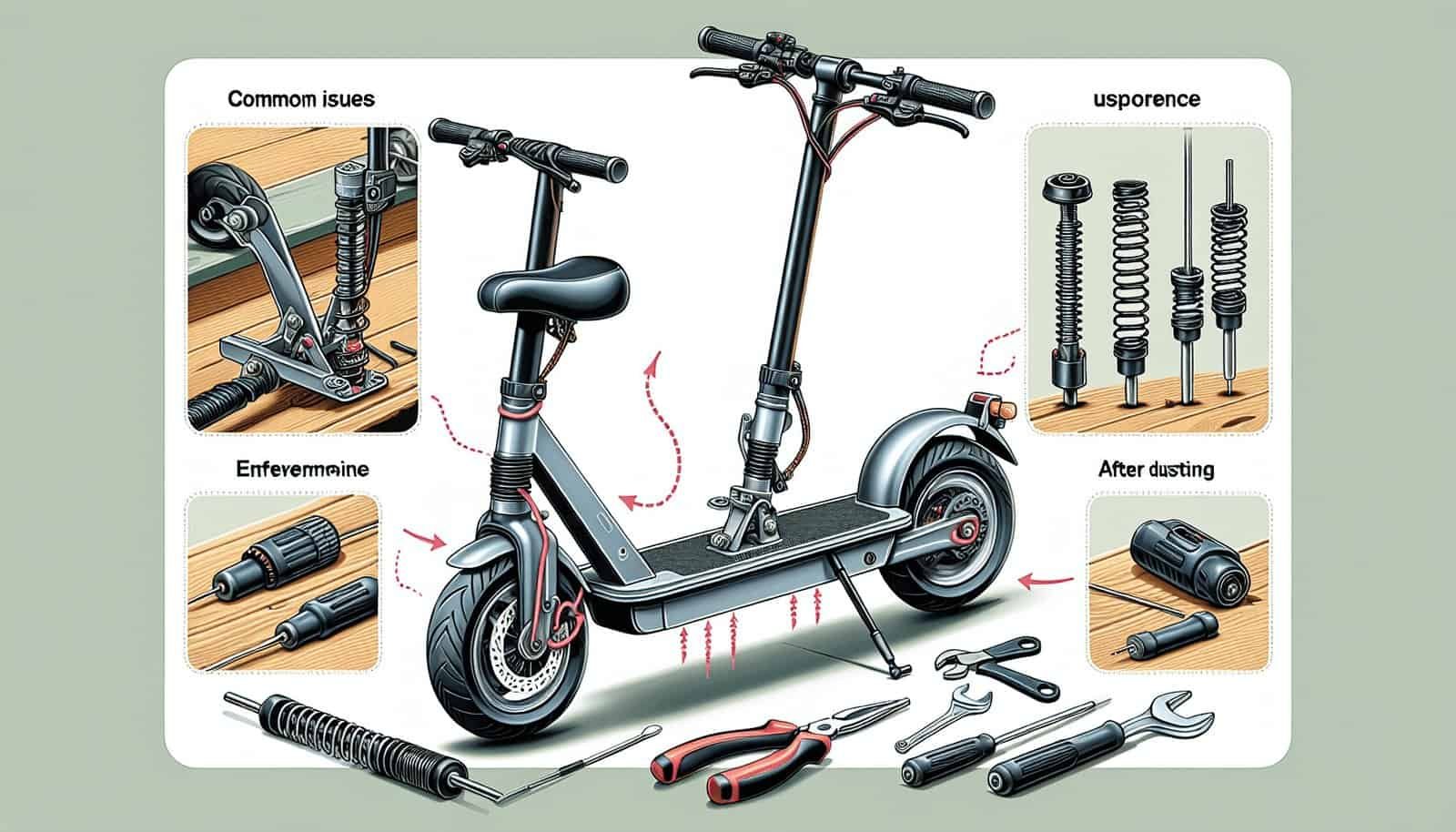Have you been experiencing a bumpy ride on your electric scooter lately? Don’t worry, we’ve got you covered! In this article, we will guide you through the process of adjusting the suspension on your electric scooter to ensure a smoother and more comfortable ride. Whether you’re a seasoned rider or just starting out, these simple tips and techniques will help you make the most of your electric scooter and enjoy a smooth journey every time. So, let’s get started and get ready to enhance your riding experience!
Understanding Suspension Systems
Types of Suspension Systems
When it comes to suspension systems, there are generally two types that you’ll find on electric scooters: front suspension and rear suspension. Front suspension systems have shock absorbers located on the front fork, while rear suspension systems have shock absorbers positioned near the rear wheel. Each type of suspension system offers distinct advantages and disadvantages, so it’s important to understand the characteristics of each before making any adjustments.
Components of a Suspension System
A typical suspension system consists of several key components that work together to absorb shocks and provide a smoother ride. These components include the shock absorbers, springs, and various linkage systems. The shock absorbers, also known as dampers, are responsible for absorbing the impact when your scooter encounters bumps or uneven surfaces. The springs, on the other hand, help support the weight of the scooter and provide added cushioning. The linkage systems play a crucial role in connecting the shock absorbers and springs to the scooter’s frame, allowing for proper suspension movement.
Function of a Suspension System
The main function of a suspension system is to cushion the rider from the impact of bumps and uneven terrain. It helps to maintain tire contact with the road, ensuring better stability and control. By absorbing shocks and vibrations, a suspension system enhances the overall comfort of your ride, especially when traveling on rough or bumpy surfaces. Additionally, a well-functioning suspension system can also improve the handling and maneuverability of your electric scooter, allowing you to navigate corners and obstacles with ease.
Evaluating Your Scooter’s Suspension
Identifying Suspension Issues
Before making any adjustments, it’s important to identify any potential suspension issues your electric scooter may have. Common signs of suspension problems include excessive bouncing or bottoming out, uneven tire wear, difficulty in handling, and a harsh or uncomfortable ride. If you notice any of these signs, it’s a good indication that your scooter’s suspension system may need some attention.
Testing the Current Suspension Setup
To evaluate your scooter’s suspension, start by testing the current setup. Take your electric scooter for a ride on different surfaces and pay close attention to how it feels. Note any inconsistencies or discomfort you experience, such as excessive jolting or a lack of responsiveness. This will help you understand which specific areas of the suspension system may require adjustments.
Determining the Required Adjustments
Once you have identified any suspension issues, it’s time to determine the specific adjustments needed. The nature of the problem will guide you in understanding which components or settings need attention. For example, if your scooter bottoms out frequently, increasing the preload on the shock absorbers may be necessary. If you experience a harsh ride, adjusting the compression and rebound settings might be required. By determining the required adjustments, you can address the specific issues and customize your scooter’s suspension system for a smoother ride.

Adjusting the Preload
Locating the Preload Adjustment Feature
To adjust the preload on your electric scooter’s suspension system, you’ll need to locate the preload adjustment feature. This feature is typically found on the shock absorbers at the front or rear of the scooter. It may be a threaded collar, a knob, or a dial that allows you to increase or decrease the preload. Consult your scooter’s user manual or contact the manufacturer if you need assistance in locating this adjustment feature.
Using the Preload Adjustment Feature
Once you’ve located the preload adjustment feature, you can begin making the necessary adjustments. Increasing the preload will stiffen the suspension, while decreasing it will soften the suspension. Start by making small adjustments, either clockwise or counterclockwise, to achieve the desired effect. It’s important to find a balance that provides adequate support and comfort while riding your electric scooter.
Finding the Optimal Preload Setting
Finding the optimal preload setting for your electric scooter’s suspension may require some trial and error. Take your scooter for a test ride after each adjustment to assess the difference in comfort and performance. If the scooter still feels too stiff, decrease the preload slightly. Conversely, if it feels too soft and bottoms out easily, increase the preload accordingly. Keep experimenting until you find the preload setting that provides the smoothest, most comfortable ride for your specific needs.
Fine-tuning the Compression
Locating the Compression Adjustment Feature
To fine-tune the compression settings of your electric scooter’s suspension system, you’ll need to locate the compression adjustment feature. This feature is usually found on the shock absorbers and can be adjusted using a specialized tool or a simple screwdriver. Refer to your scooter’s user manual or consult the manufacturer for guidance on locating the compression adjustment feature.
Adjusting the Compression Settings
Once you’ve located the compression adjustment feature, you can begin adjusting the compression settings. The compression refers to how quickly the shock absorbers compress when encountering bumps or uneven terrain. If you find that your scooter’s suspension feels too harsh, adjusting the compression to a softer setting can help alleviate this issue. Conversely, if you experience excessive bouncing, adjusting the compression to a firmer setting can provide better stability.
Optimizing the Compression for a Smoother Ride
Optimizing the compression settings depends on finding the right balance for your riding preferences and the terrain you typically encounter. Experiment by making incremental adjustments, starting with small changes and then evaluating the impact on your scooter’s ride comfort. Continue to fine-tune the compression settings until you achieve a smooth and controlled ride that suits your needs.

Adjusting the Rebound
Locating the Rebound Adjustment Feature
Adjusting the rebound settings of your electric scooter’s suspension system requires locating the rebound adjustment feature. This feature is typically found on the shock absorbers and can be adjusted using a tool or screwdriver. Refer to your scooter’s user manual or contact the manufacturer for specific instructions on locating the rebound adjustment feature.
Modifying the Rebound Settings
Once you’ve identified the rebound adjustment feature, you can start modifying the rebound settings. The rebound refers to how quickly the shock absorbers extend back to their original position after compressing. If you feel that your scooter’s suspension is too bouncy or doesn’t recover smoothly from bumps, adjusting the rebound to a slower setting can help alleviate these issues. On the other hand, if you notice that your scooter’s suspension feels too slow or heavy, adjusting the rebound to a faster setting can provide better responsiveness.
Achieving an Ideal Rebound for a Smoother Ride
Achieving the ideal rebound setting is a matter of finding the right balance between comfort and control. Begin by making small adjustments and testing your scooter’s performance after each change. Pay attention to how the scooter handles bumps and how it feels during turns and maneuvers. Continue to refine the rebound settings until you achieve a smooth and well-managed ride that enhances your overall scooter experience.
Checking and Adjusting Tire Pressure
Importance of Proper Tire Pressure
Proper tire pressure is essential for optimal scooter performance and a smoother ride. Underinflated tires can lead to decreased stability, difficult handling, and increased rolling resistance. Overinflated tires, on the other hand, can result in a harsh ride and reduced traction. Therefore, it’s crucial to maintain the recommended tire pressure for your electric scooter.
Checking the Current Tire Pressure
To check your scooter’s tire pressure, you’ll need a tire pressure gauge. Refer to your scooter’s user manual to determine the recommended tire pressure. Remove the valve cap from each tire and firmly press the gauge onto the valve stem. The gauge will display the current tire pressure, allowing you to assess whether adjustments are necessary.
Adjusting the Tire Pressure for a Smoother Ride
If the tire pressure is too low, use an air pump to add air until you reach the recommended pressure. Alternatively, if the tire pressure is too high, release some air using the valve stem’s core removal tool or a small object like a pen tip. Be cautious not to deflate the tire excessively. Once you’ve adjusted the tire pressure, test your scooter’s ride comfort and handling to ensure a smoother experience.

Inspecting and Replacing Worn Suspension Components
Signs of Worn Suspension Parts
Over time, suspension components can wear out and affect the performance of your electric scooter’s suspension system. Common signs of worn suspension parts include leaks, cracks, excessive play, rust, or noises such as squeaking or clunking. If you notice any of these signs, it’s important to inspect and potentially replace the worn components.
Inspecting and Diagnosing Worn Components
To inspect your electric scooter’s suspension components, start by visually examining each part for any visible signs of damage or wear. Pay close attention to the shock absorbers, springs, and linkage systems. If you identify any issues, such as leaking oil from the shock absorbers or cracked springs, it’s recommended to consult a professional or contact your scooter’s manufacturer for further diagnosis and guidance on replacement.
Replacing Worn Suspension Parts
If you determine that certain suspension components need to be replaced, it’s crucial to use genuine parts that are compatible with your electric scooter’s make and model. Consult your scooter’s user manual or contact the manufacturer to obtain the correct replacement parts and follow the recommended installation procedures. Properly replacing worn suspension parts will ensure that your scooter’s suspension system functions optimally, providing a smoother and safer ride.
Upgrading Suspension for Enhanced Performance
Considerations for Upgrading Suspension
If you’re seeking enhanced performance from your electric scooter’s suspension system, upgrading certain components may be an option worth exploring. However, before proceeding with any upgrades, it’s important to consider a few factors. Assess your riding style, the terrain you frequent, and the level of improvement you desire. Additionally, consult with professionals or seek advice from experienced riders who have knowledge of suspension upgrades.
Choosing the Right Suspension Upgrade
When selecting a suspension upgrade for your electric scooter, there are various options to consider. Upgrading to adjustable shock absorbers, for example, can provide better customization and fine-tuning options. Other upgrades may include replacing stock springs with stiffer or softer ones based on your specific preferences. It’s crucial to choose the right suspension components that are compatible with your scooter’s make and model to ensure proper fitment and performance.
Installing and Adjusting Upgraded Suspension Components
Installing an upgraded suspension system typically involves removing the existing components and replacing them with the new ones. Follow the manufacturer’s instructions and recommendations during the installation process to ensure a proper fit and secure attachment. Once the new suspension components are installed, adjusting the various settings, such as preload, compression, and rebound, may be necessary to optimize the performance and comfort of the upgraded suspension system. Again, consult the manufacturer’s guidelines or seek professional assistance if needed.

Maintaining and Regularly Inspecting the Suspension
Scheduling Regular Maintenance
To keep your electric scooter’s suspension system in top shape, it’s essential to schedule regular maintenance. Set a maintenance schedule based on your usage frequency and the manufacturer’s recommendations. Regular maintenance can involve tasks such as cleaning, lubricating, and inspecting various suspension components. By following a maintenance routine, you can prevent premature wear, identify potential issues early on, and ensure that your suspension system continues to provide a smooth and safe ride.
Performing Visual Inspections
Visual inspections of your scooter’s suspension components should be conducted regularly. Look for signs of damage, wear, or leakage in the shock absorbers and other suspension parts. Inspect the springs for cracks, deformation, or corrosion. Pay attention to the linkage systems for any loose or damaged connections. By visually inspecting these components, you can promptly address any issues and prevent potential problems that could affect your scooter’s suspension performance.
Conducting Suspension Tests
In addition to visual inspections, conducting suspension tests can help assess the overall condition and performance of your electric scooter’s suspension system. During these tests, ride your scooter on various surfaces, including uneven terrain, and evaluate how well the suspension absorbs shocks and vibrations. Assess the stability, comfort, and handling of the scooter during acceleration, braking, and cornering. If you notice any abnormalities or inconsistencies, further inspection or adjustments may be required.
Enjoying a Smoother Ride
Testing and Fine-Tuning Your Adjusted Suspension
After making adjustments or upgrades to your electric scooter’s suspension system, it’s crucial to test and fine-tune the modifications. Take your scooter for a ride on different surfaces, paying attention to the overall comfort, stability, and handling. Make note of any specific areas that may require further adjustments. By actively testing and fine-tuning your adjusted suspension, you can tailor it to meet your specific riding preferences and ensure a smoother overall ride experience.
Adapting to the Improved Ride Comfort
Once you’ve achieved a smoother ride through suspension adjustments or upgrades, it’s necessary to adapt and become accustomed to the enhanced ride comfort. Notice how your scooter handles bumps and uneven terrain more effectively, providing a more enjoyable and controlled ride. Take some time to become familiar with the new suspension settings and make any necessary minor adjustments as you become acclimated. Enjoy the improved ride comfort and appreciate the benefits of your efforts in enhancing your scooter’s suspension system.
Continuing to Maintain and Optimize Your Scooter’s Suspension
Remember that maintaining and optimizing your electric scooter’s suspension system is an ongoing process. Regularly inspect the suspension components, perform maintenance tasks as needed, and keep an eye out for any signs of wear or damage. As your riding preferences or the scooter’s performance evolves, you may find it necessary to adjust or upgrade the suspension system further. By staying proactive in maintaining and optimizing your scooter’s suspension, you can ensure a consistently smooth ride for years to come.
In conclusion, adjusting and optimizing the suspension system on your electric scooter can significantly enhance your overall ride comfort, stability, and control. By understanding the different suspension components, conducting evaluations, and making appropriate adjustments, you can achieve a smoother and more enjoyable riding experience. Whether it’s adjusting the preload, compression, and rebound settings, or upgrading suspension components, taking the time to optimize your scooter’s suspension will allow you to enjoy the full potential of your electric scooter while navigating various terrains with ease.


